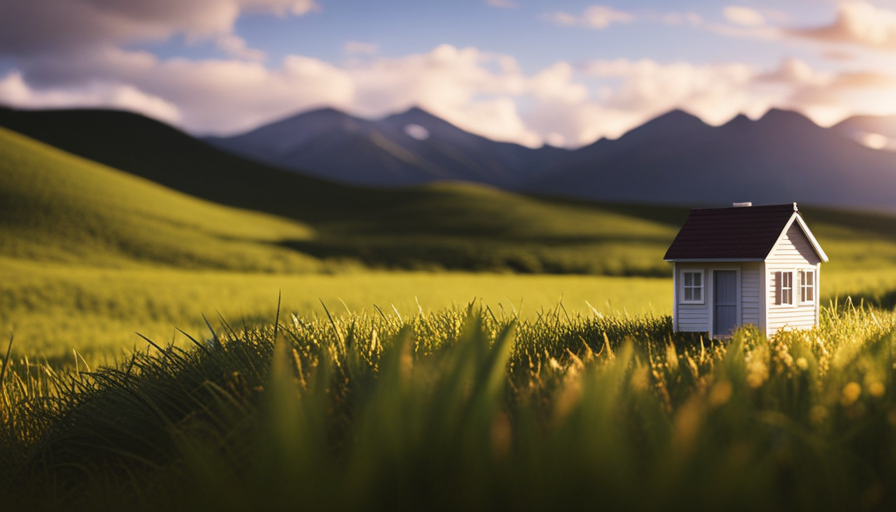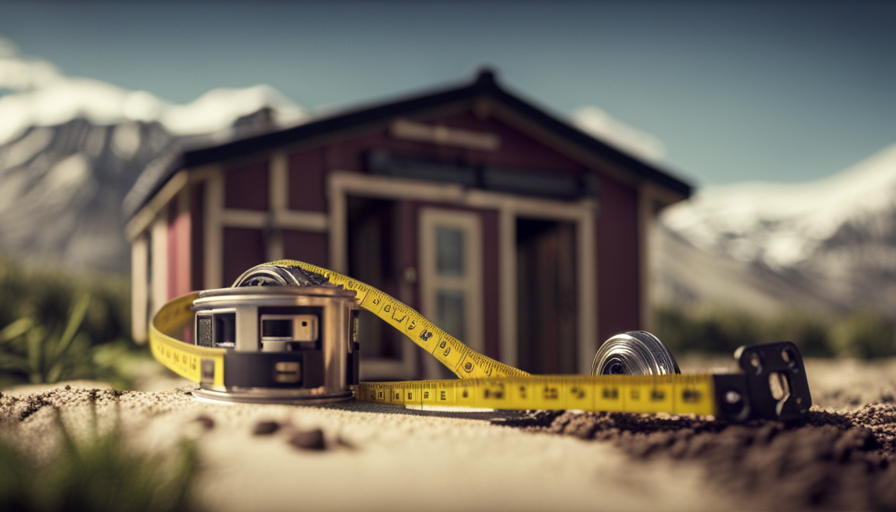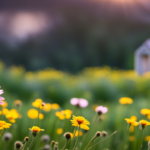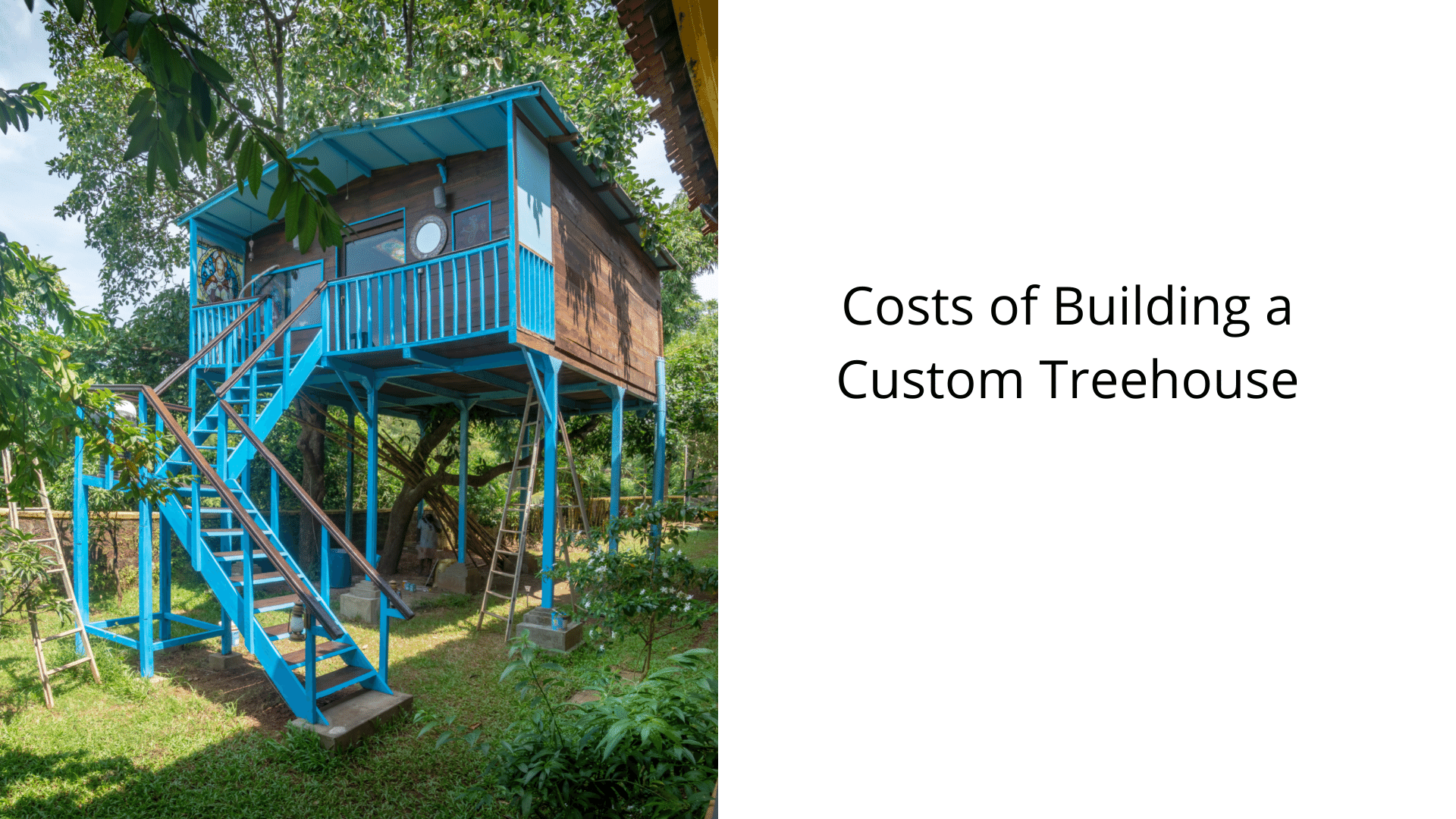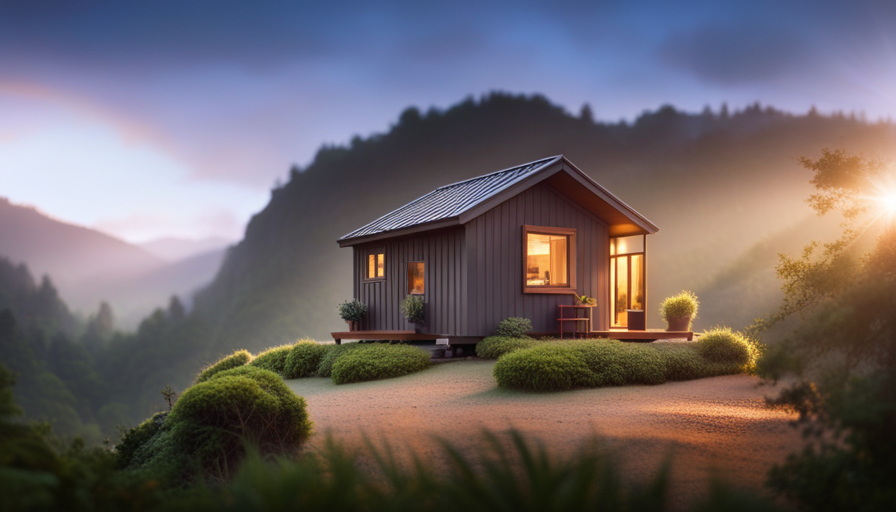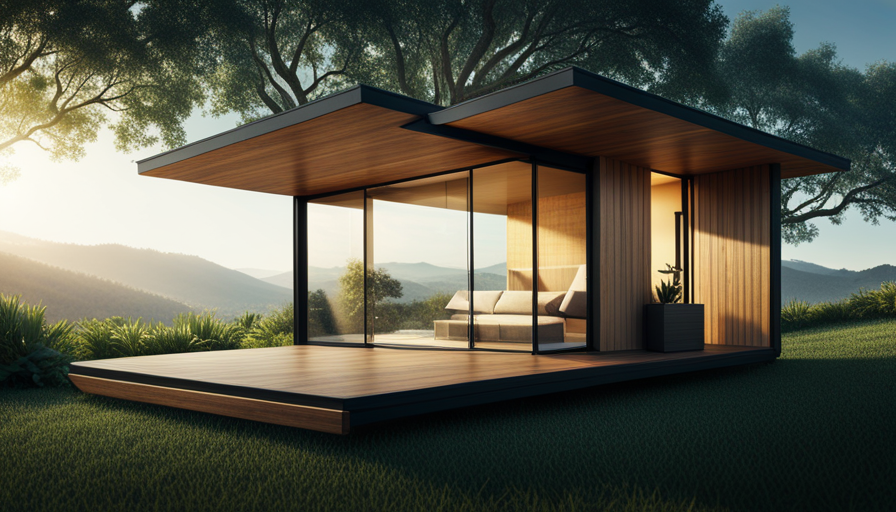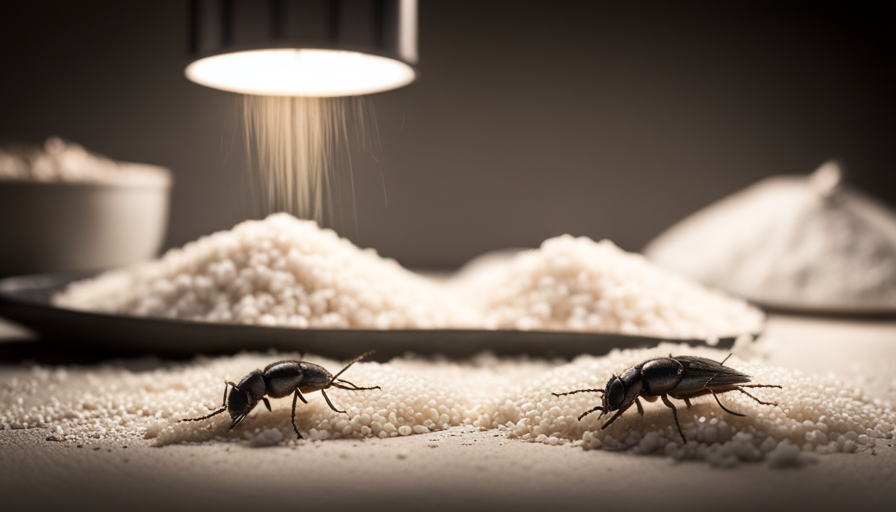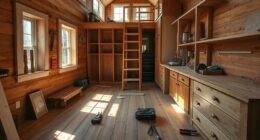Have you ever dreamed of streamlining your lifestyle to live in a cozy, minimalistic setting? If so, building a tiny house might be the perfect choice for you. But before diving into this exciting project, you may be wondering, “How much does it cost to build a tiny house?”
Well, let me tell you, the cost of building a tiny house can vary greatly depending on several factors. From the size and layout to the building materials and whether you hire professionals or take a DIY approach, all these elements play a role in determining the final price tag.
In this article, we will explore the various factors that influence the cost of building a tiny house and provide you with budgeting tips, financing options, and additional costs to consider. So, if you’re ready to embark on this journey towards a simpler and more sustainable lifestyle, let’s dive in and explore the world of tiny house construction together.
Key Takeaways
- Cost of building a tiny house varies based on factors such as size, layout, materials, and professionals vs DIY approach
- Using salvaged or repurposed materials and simpler design can save costs
- Thorough research and vetting of contractors is important for a successful and cost-effective build
- Downsizing to a tiny house offers financial savings, a smaller environmental footprint, and increased flexibility in lifestyle choices.
Factors that Influence the Cost of Building a Tiny House
The cost of building a tiny house can vary greatly depending on several factors, such as location and materials used, which can make it an exciting and challenging project.
When considering the budget for a tiny house, there are several key considerations to keep in mind. First, the location of the build can greatly impact the overall cost. Different areas have different building codes and permit requirements, which can affect the cost of construction. Additionally, the availability and cost of materials in that area can also play a significant role.
Another factor to consider is the size and design of the tiny house. A smaller and simpler design will generally cost less than a larger, more complex one.
Finally, cost-saving strategies, such as using salvaged or repurposed materials, can help to reduce expenses.
By carefully considering these budgeting considerations and implementing cost-saving strategies, it’s possible to build a tiny house that meets your needs and fits within your budget.
Transitioning into the subsequent section about budgeting for your tiny house project, it’s important to plan and allocate your resources wisely to ensure a successful and cost-effective build.
Budgeting for Your Tiny House Project
Planning your dream tiny home project? Wondering how to budget for it? Let’s dive into the nitty-gritty of financing your cozy abode!
When it comes to budgeting for your tiny house, there are a few key factors to consider. First, stay up-to-date with the latest tiny house design trends. This will help you determine what features and materials you want to incorporate into your project. By staying current, you can make informed decisions that align with your vision and budget.
Another important aspect of budgeting is finding cost-saving tips for your tiny house construction. For instance, consider using reclaimed materials or repurposing items to save on costs. Additionally, opting for a simpler design with fewer customizations can help keep expenses down.
By carefully planning and budgeting for your tiny house, you can ensure that your dream home becomes a reality without breaking the bank.
Next, we will explore the importance of choosing the right size and layout for your tiny house, which is crucial for creating a comfortable and functional living space. So, let’s move on to the next step and make your tiny house dreams come true!
Choosing the Right Size and Layout
Ready to create your perfect compact haven? Discover the ideal dimensions and arrangement to maximize your cozy living experience.
When choosing the right size and layout for your tiny house, it’s crucial to prioritize space and functionality. Every square inch counts, so carefully consider how you’ll utilize each area of your home. Start by assessing your needs and lifestyle. Are you a minimalist who only requires the essentials, or do you need space for hobbies and guests? This will help you determine the square footage you need.
Additionally, think about the layout that’ll work best for you. Will an open floor plan provide the flexibility you desire, or do you prefer separate rooms for privacy?
Maximizing space is key in a tiny house. Look for innovative storage solutions, such as built-in cabinets, loft beds, and foldable furniture. Utilize vertical space by incorporating tall shelves and hanging organizers. Furthermore, consider multifunctional furniture that can serve multiple purposes, such as a dining table that can also be used as a workspace.
Choosing the right size and layout for your tiny house is essential for maximizing space and functionality. By carefully planning and considering your needs, you can create a cozy and efficient living environment.
Now that you’ve determined the perfect dimensions and arrangement, it’s time to move on to the next step: selecting the ideal building materials.
Selecting the Ideal Building Materials
To create your dream compact haven, start by considering the perfect building materials that will bring your cozy living vision to life. When it comes to building a tiny house, there are various options for building materials that are both cost-effective and durable. Choosing the right materials is essential to ensure the longevity and sustainability of your tiny home.
Here is a table showcasing some popular building material options for tiny houses:
| Material | Pros | Cons |
|---|---|---|
| Wood | Natural, easy to work with | Requires regular maintenance |
| Steel | Strong, durable | Expensive |
| SIPs (Structural Insulated Panels) | Energy-efficient, quick installation | Limited design flexibility |
| Concrete | Fire-resistant, low maintenance | Heavy and requires expertise |
| Recycled materials | Environmentally-friendly, unique | May require more effort to source |
Each material has its own advantages and disadvantages, so it’s important to carefully evaluate your priorities and budget before making a decision. Consider factors such as insulation, weight, maintenance, and overall aesthetic appeal.
When it comes to the subsequent section about hiring professionals versus a DIY approach, it’s essential to consider how your choice of building materials may impact that decision. By selecting materials that are easier to work with, you may have more flexibility in choosing whether to hire professionals or tackle the project yourself.
Hiring Professionals vs. DIY Approach
When it comes to building a tiny house, one of the main considerations is whether to hire professionals or take the DIY approach. Hiring contractors can have its advantages, such as their expertise and experience, but it can also be expensive and may limit your creative control.
On the other hand, opting for the DIY route allows for more customization and cost savings, but it also comes with its own set of challenges, such as acquiring the necessary skills and finding the right resources and support.
Pros and Cons of Hiring Contractors
One of the advantages of hiring contractors is that they’re experienced in building tiny houses. They have the knowledge and skills to efficiently construct a structurally sound and code-compliant home. Contractors are familiar with the building process and can navigate any challenges that may arise. They can also provide valuable insights and suggestions based on their expertise.
Additionally, hiring professionals can save time and effort as they take care of the construction process from start to finish. However, there are also some cons to consider. Hiring contractors can be expensive, and it may be difficult to find professionals who specialize in tiny house construction. It’s important to thoroughly research and vet potential contractors to ensure they have the necessary qualifications and experience.
Transitioning into the next section, DIY building challenges and considerations, it’s essential to weigh the pros and cons before deciding on the best approach for building a tiny house.
DIY Building Challenges and Considerations
Building your own tiny home can be an exciting and rewarding adventure, but it’s important to be aware of the challenges and considerations involved in the DIY process.
DIY building tips can help you navigate through these challenges and ensure a successful project. One of the main challenges is acquiring the necessary skills and knowledge to construct a structurally sound and functional tiny house. It’s crucial to educate yourself on building codes, zoning regulations, and construction techniques specific to tiny homes.
Additionally, finding suitable materials and tools within your budget can be a hurdle. However, with proper planning, research, and creativity, these challenges can be overcome.
Engaging in online forums, attending workshops, and seeking guidance from experienced DIY builders can provide valuable resources and support. By tapping into these networks, you can gain insights and learn from others’ experiences, ultimately increasing your chances of a successful DIY tiny house project.
Finding Resources and Support for DIY Builders
Seeking out helpful resources and support from experienced DIY builders can be a game-changer, providing a community of knowledge and encouragement that breathes life into your dream home project.
When it comes to finding affordable materials for your tiny house, connecting with other tiny house builders is a great way to discover cost-effective options. Many builders are willing to share their experiences and recommendations on where to source materials at a lower cost.
Online forums, social media groups, and local meetups are excellent platforms to connect with like-minded individuals who can point you in the right direction. Additionally, these communities often organize group buys, allowing you to purchase materials in bulk and save money. By tapping into this network, you can find not only affordable materials but also invaluable advice and support.
As you navigate the process of building a tiny house, understanding the legal and zoning regulations is crucial for a successful project.
Navigating Legal and Zoning Regulations
Navigating legal and zoning regulations can be a complex process when it comes to building a tiny house. There are several legal restrictions and zoning requirements that DIY builders need to be aware of in order to ensure their tiny house is compliant with local regulations.
Here are two key factors to consider when it comes to legal and zoning regulations for tiny house construction:
-
Legal Restrictions:
- It’s important to research and understand the legal restrictions that may apply to tiny houses in your area. Some jurisdictions may have minimum square footage requirements or specific building codes that need to be followed. It’s crucial to comply with these regulations to avoid any potential legal issues down the line.
- Additionally, there may be restrictions on where you can park or place your tiny house. Some areas may only allow tiny houses in designated RV parks or as accessory dwelling units on existing properties. Understanding these restrictions will help you find suitable locations for your tiny house.
-
Zoning Requirements:
- Zoning regulations determine how land can be used and what types of structures are allowed in specific areas. It’s important to research the zoning requirements in your area to determine if building a tiny house is permitted and what limitations may apply. For example, some areas may only allow tiny houses in certain zoning districts or may have minimum lot size requirements.
- By understanding the zoning requirements, you can identify suitable locations for your tiny house and avoid potential conflicts with local authorities.
Navigating legal and zoning regulations is just one aspect of building a tiny house. Once you have a clear understanding of these requirements, you can move on to considering the additional costs involved in the construction process.
Additional Costs to Consider
When it comes to constructing a tiny home, it’s crucial to factor in the hidden expenses that can add up and impact your budget. While the cost of materials, labor, and land are the main components of building a tiny house, there are additional expenses that you need to consider.
One of the significant hidden costs is permits and inspections. Depending on your location, you may need to obtain various permits for zoning, building, electrical, plumbing, and wastewater. These permits can quickly add up and vary in cost.
Another expense to consider is utility connections. You may need to hire a professional to connect your tiny house to electricity, water, and sewage systems, which can be quite costly.
Additionally, you need to factor in the cost of interior finishes, such as flooring, cabinetry, and appliances, as well as any necessary furniture and decor.
Finally, don’t forget about insurance and ongoing maintenance costs. Insuring a tiny house can be more expensive than regular homeowner’s insurance, and regular maintenance is crucial to ensure your tiny home stays in good condition.
Transitioning into the next section about financing options for tiny house construction, it’s essential to understand how these additional expenses can impact your overall budget and influence the financing decisions you make.
Financing Options for Tiny House Construction
When it comes to financing the construction of a tiny house, there are several key points to consider.
First, saving and budgeting strategies are essential in order to accumulate the necessary funds.
Second, personal loans and financing programs can provide additional sources of funding.
Finally, crowdfunding and alternative funding methods have become increasingly popular options for those looking to finance their tiny house construction.
These strategies and programs offer individuals various avenues to explore and secure the necessary funds for their tiny house project.
Saving and Budgeting Strategies
To make your tiny house dreams a reality, start by envisioning creative ways to save and budget, like cutting back on daily lattes and swapping them for homemade brews. Saving strategies are essential in minimizing the cost of building a tiny house. One effective strategy is to source cost-effective materials, such as reclaimed wood or recycled materials, which can significantly reduce expenses. Another option is to explore DIY techniques, allowing you to take on certain tasks yourself instead of hiring professionals. Additionally, consider downsizing your lifestyle and selling unnecessary possessions to generate extra funds for your project. By implementing these strategies, you can build your tiny house on a budget and make your dream a reality. Transitioning into the subsequent section about personal loans and financing programs, it is important to explore various options to ensure the financial feasibility of your project.
Personal Loans and Financing Programs
Exploring personal loans and financing programs for your tiny house project is like finding a key that unlocks the door to your dream home.
There are several options available when it comes to personal loans, which can be obtained from banks, credit unions, or online lenders. These loans can provide you with the necessary funds to cover the costs of building your tiny house, including materials, labor, and any additional expenses.
Additionally, government grants may also be available to assist with the financing of your project. It’s important to research and compare different personal loan options to find the best terms and interest rates that suit your needs.
Once you have explored personal loans and government grants, you can transition into the subsequent section about crowdfunding and alternative funding methods.
Crowdfunding and Alternative Funding Methods
Now that we’ve discussed personal loans and financing programs, let’s explore another avenue for funding your tiny house project: crowdfunding and alternative funding methods.
Crowdfunding, in particular, has gained popularity in recent years due to its numerous benefits. Not only does it allow you to reach a wider audience and potentially secure funding from people who share your passion for tiny houses, but it also provides an opportunity for community engagement and support. Additionally, crowdfunding platforms often offer various incentives for backers, such as exclusive updates, merchandise, or even the chance to visit your completed tiny house.
If crowdfunding doesn’t suit your needs, there are alternative funding sources to consider, such as grants, sponsorships, or partnerships with local businesses. These options can provide additional financial support and help you bring your tiny house dream to life.
Moving forward, let’s explore how you can build your tiny house on a budget.
Building Your Tiny House on a Budget
Looking for ways to save money while building your tiny house? You can easily stick to a budget and create your dream home by implementing smart cost-cutting strategies. Here are some budgeting tips and cost-saving strategies to help you build your tiny house without breaking the bank:
-
Plan and research: Before starting your project, spend time planning and researching different materials, designs, and construction methods. This will help you make informed decisions and find affordable options that meet your needs.
-
DIY as much as possible: Doing the work yourself can save a significant amount of money. Take on tasks like painting, flooring, and installing fixtures to cut down on labor costs.
-
Use reclaimed and recycled materials: Embrace the idea of repurposing by using reclaimed or recycled materials. Look for salvaged wood, windows, doors, and other items that can be reused in your tiny house. Not only will this save you money, but it also adds character and uniqueness to your home.
By following these budgeting tips and cost-saving strategies, you can build your tiny house on a budget while still achieving your dream home. Transitioning into the next section, let’s explore the value and benefits of living in a tiny house.
The Value and Benefits of Living in a Tiny House
Living in a tiny house offers a myriad of advantages and countless benefits for those seeking a simpler, more sustainable lifestyle. The value of downsizing cannot be overstated, as it allows individuals to focus on what truly matters and eliminate unnecessary clutter from their lives. By embracing minimalism, one can experience a sense of freedom and contentment that comes from living with less.
Sustainable living is another key benefit of tiny house living. With a smaller footprint, tiny houses require fewer resources to build and maintain. This leads to reduced energy consumption and a lower environmental impact. Additionally, many tiny houses are designed with sustainable features such as solar panels, rainwater harvesting systems, and composting toilets. These eco-friendly choices not only help the planet but also save homeowners money in the long run.
To illustrate the value and benefits of living in a tiny house, let’s consider a comparison between a traditional house and a tiny house:
| Traditional House | Tiny House |
|---|---|
| Expensive mortgage | Affordable cost |
| High utility bills | Lower energy costs |
| Large cleaning and maintenance tasks | Minimal upkeep |
| Limited mobility | Ability to travel and relocate easily |
As the table demonstrates, living in a tiny house offers financial savings, reduced environmental impact, and increased flexibility. It allows individuals to prioritize their values, simplify their lives, and embrace a more sustainable way of living.
Frequently Asked Questions
Can I build a tiny house on wheels without a building permit?
No, building a tiny house on wheels without a building permit is not permissible under building regulations and zoning laws. These laws are in place to ensure safety, proper construction, and adherence to local ordinances.
What are the maintenance costs associated with owning a tiny house?
Tiny house maintenance costs can vary depending on factors such as location, size, and materials used. Regular upkeep includes cleaning, repairs, and utilities. To reduce expenses, I recommend proper insulation, durable materials, and regular inspections for early detection of issues.
Are there any restrictions on where I can park my tiny house?
There are various parking regulations and legal constraints when it comes to tiny houses. These restrictions can include zoning laws, building codes, and homeowner association rules. It’s important to research and comply with these regulations to avoid any legal issues.
How much does it cost to connect a tiny house to utilities?
Connecting a tiny house to utilities can cost anywhere from a few thousand dollars to tens of thousands, depending on location and accessibility. While off-grid living saves money, connecting offers convenience and access to amenities.
Can I build a tiny house in a remote or off-grid location?
Living off-grid in a remote location is feasible for a tiny house. It requires careful planning to ensure self-sustainability through alternative energy sources, water collection, and waste management systems.
Conclusion
In conclusion, building a tiny house can be a cost-effective and rewarding housing option for those looking to live a simpler and more sustainable lifestyle.
While the cost of building a tiny house can vary depending on various factors such as size, layout, and materials, it is estimated that the average cost ranges from $20,000 to $100,000.
However, an interesting statistic to note is that over 68% of tiny house owners have no mortgage compared to the national average of 29%. This highlights the financial freedom and reduced debt burden that can come with living in a tiny house.
Hi, I’m Emma. I’m the Editor in Chief of Tiny House 43, a blog all about tiny houses. While tree houses are often associated with childhood, they can be the perfect adult retreat. They offer a cozy space to relax and unwind, surrounded by nature. And since they’re typically built on stilts or raised platforms, they offer stunning views that traditional homes simply can’t match. If you’re looking for a unique and romantic getaway, a tree house tiny house might just be the perfect option.
